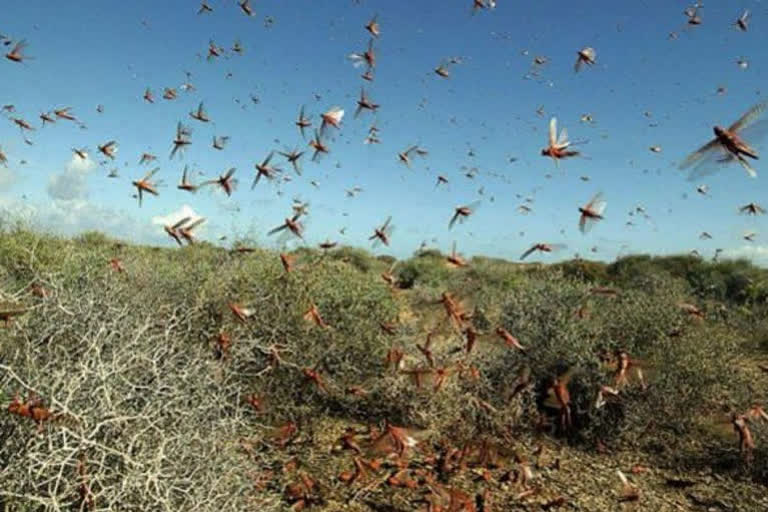Chandigarh (Haryana): After locust attack in Rajasthan, Madhya Pradesh and Maharashtra, districts of Haryana have been put on high alert. Swarms of locusts have destroyed huge chunk of crops and pose a great threat to the farmers.
The country has two centuries of experience in dealing with locust attack. Locust Warning Organisation is at the forefront to tackle the crisis said that locusts in Rajasthan have led to devastation, wreaking a major havoc on mankind.
According to beliefs, even religious books have called locusts 'curse for humanity' as they have the capacity for voracious consumption. This can be dated back to ancient civilisations when massive locust attack made people died of starvation.
History of locusts
Locust attack is not something new in India. The country witnessed its last locust attack in 1993 and this year too, many districts have been put on high alert. India experienced serious locust outbreak in its 80s and 90s.
According to a report submitted by the Locust Warning Organisation, a total of 172 locusts attacked crops in 1993 leading to huge damage. The period between 1983-1989 also witnessed huge locust attack in Indian subcontinents. Studies reveal that the total life span of a locust is only 90 days. A locust can eat food equivalent to its weight in an entire day and can fly at a height of around 5,000 feet over the ground. At present, at least 60 countries are reeling under the effect of locust attack.
Types of locusts:
There are various species of locusts. Common ones are:
1.Desert Locust
2.Bombay Locust
3.Migratory locust
4.Italian locust
5.Moroccan locust
6.Red locust
7. Brown locust
8. South American locust
India is a home to Desert, Migratory, Bombay and Tree locusts. Experts said that locusts prefer residing on large trees like Babool and attack the crops in the evening.
Preventive Measures:
Dr. Yogesh Kumar, an entomologist in Haryana Agriculture University said, "Generally locusts live in groups called as swarm of locusts. When 10,000 locusts attack on crops, it becomes an uphill task for the farmers to control the attack. Farmers need to take preventive measures.
He added, "Locusts breed in arid desert areas. In India, the main breeding grounds are in Rajasthan and Bhuj region. The weather does not affect locust and they lay eggs in moist sandy soils. It takes around two to five weeks for the eggs to hatch. The main problem arises once the female locust starts laying eggs. Female locusts can lay 80-90 eggs thrice in her 3 month life cycle.
Commenting on the appetite, Dr. Yogesh said, "Locusts can eat food for 2,500 people in a day. Farmers should take preventive measures like spraying of pesticides before the swarms of locusts invade in."
Explaining about the types of insecticides, the entomologist added, "Farmers should use insecticides like Chloropirifoce, 20 CAB, 50 CAB, Lamda Cylothrin, Deltamathrin, Melathian to protect the crops from locust attack."
After the state government urged the Central govt to help, drones on a trial basis were deployed in Rajasthan to disperse the locust attack. An extensive planning is also underway to engage drones by rolling out a tender.
Earlier, Union Agriculture Ministry had said that 15 sprayers will be procured from the UK and locust control operations are continuously monitored in all the affected regions.
Read: All you need to know about how Rajasthan is tackling the locust attack!



